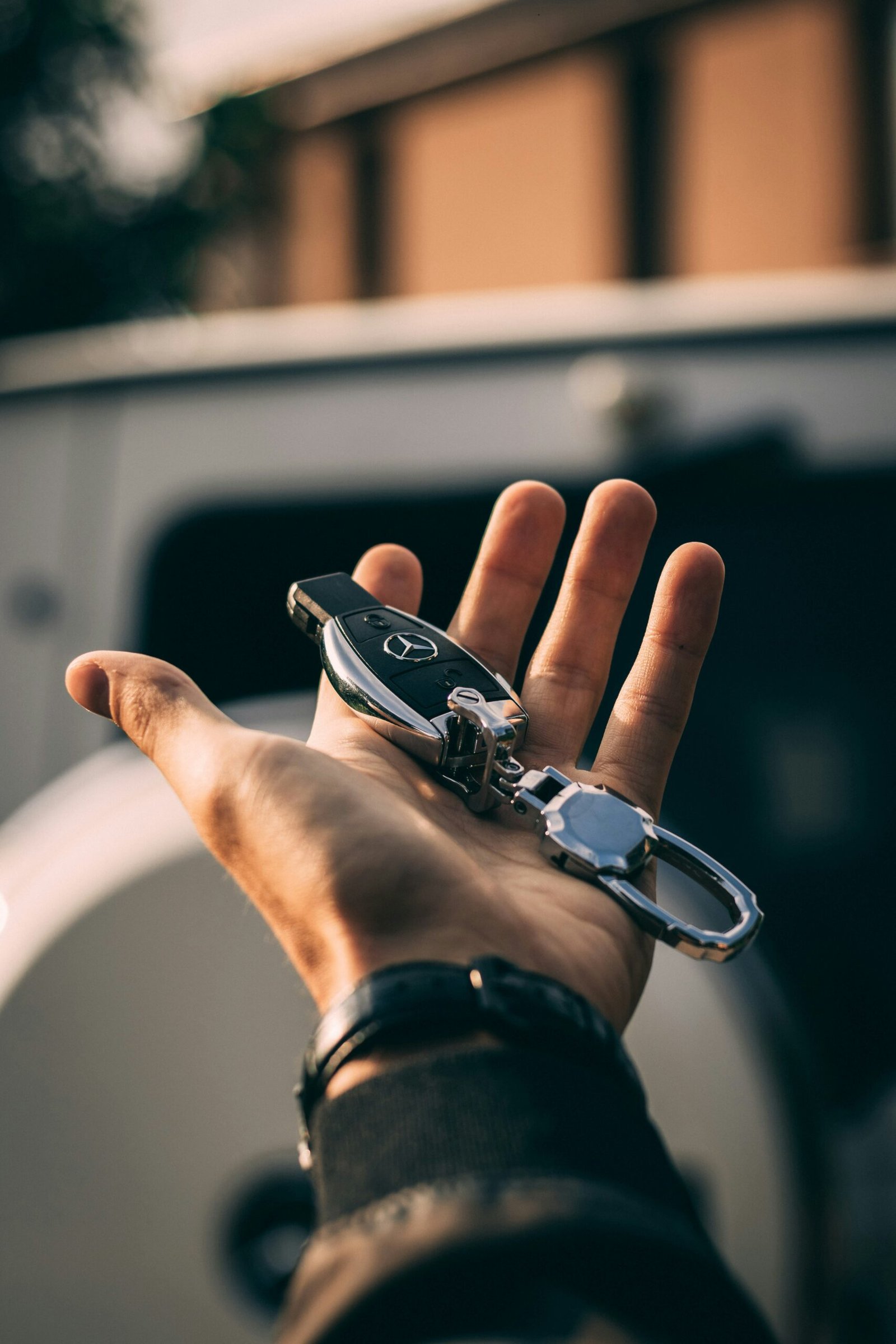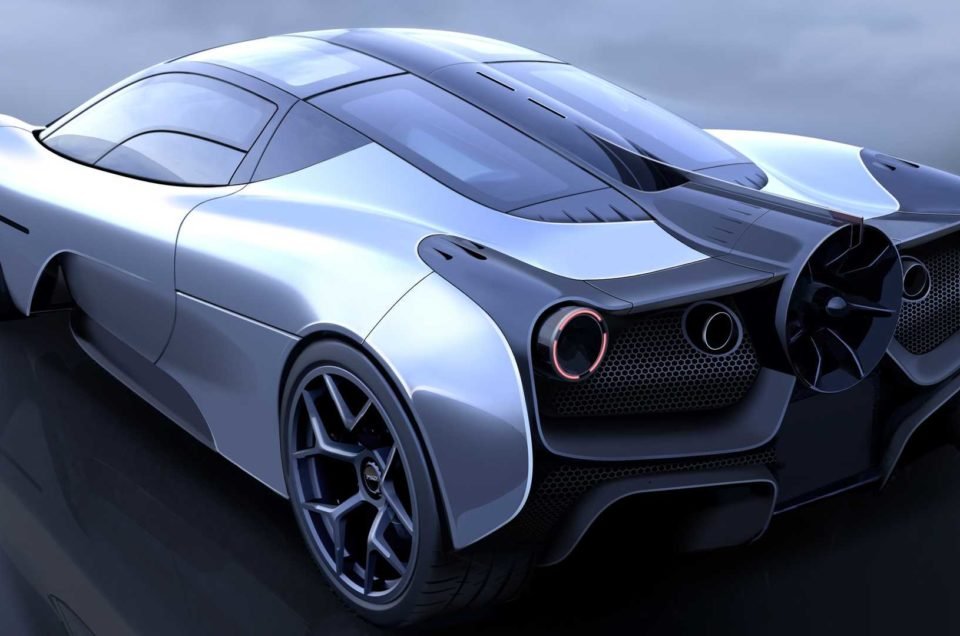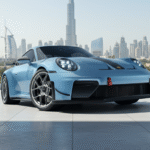Introduction to Driving Exotic Cars in Dubai
Dubai has established itself as a premier destination for luxury and extravagance, attracting car enthusiasts from around the globe. The cityscape is characterized by its opulent architecture and meticulously maintained roads, making it an ideal environment for high-performance vehicles. Among the myriad of exotic cars cruising through Dubai, the McLaren stands out for its engineering prowess and sleek design. This British automaker has garnered a devoted following, thanks to its combination of speed, handling, and cutting-edge technology.
The allure of driving a McLaren or other supercars in Dubai is multifaceted. The city’s skyline, adorned with futuristic skyscrapers and sprawling desert vistas, offers a visually stunning backdrop that enhances the driving experience. Moreover, Dubai’s diverse terrains provide a compelling range of driving scenarios, from the smooth tarmac of Sheikh Zayed Road to the challenging roads winding through the Hajar Mountains. For many, the sheer thrill of accelerating a McLaren on these pristine roads is a compelling draw.
In addition to its picturesque settings, Dubai also boasts an impressive infrastructure supporting exotic cars. The city is peppered with facilities and services tailored for high-end vehicles, including specialized garages, performance tuners, and rental companies providing a fleet of luxury cars for any taste. The financial environment in Dubai, characterized by a tax-free income and a high standard of living, further encourages the ownership and enjoyment of such high-performance automobiles.
Nonetheless, driving a McLaren or any supercar in Dubai isn’t merely about the car itself; it is about partaking in a lifestyle of luxury and ambition. Enthusiasts relish not just the vehicles but the culture that adores and elevates them. Dubai’s unique blend of modernity and tradition creates an unparalleled atmosphere for those enamored with exotic cars, turning every drive into a memorable experience. Whether you are a resident or a visitor, the combination of Dubai’s luxurious backdrop and your dream car, like a McLaren, transforms everyday drives into extraordinary adventures.
Weather Conditions in Dubai
Dubai is renowned for its arid desert climate, characterized by hot, sunny weather nearly all year round. The city’s typical weather patterns feature extremely high temperatures, particularly during the summer months, where temperatures often exceed 40 degrees Celsius. Annual rainfall in Dubai is drastically low, averaging only about 100 mm, making rain a rather infrequent occurrence. The most significant rainfall generally takes place between December and March, often as brief, scattered showers rather than prolonged downpours.
When rain does occur in Dubai, it tends to be heavy and sporadic, sometimes accompanied by thunderstorms. These brief but intense periods of rainfall can lead to flash flooding due to the city’s limited drainage infrastructure, causing temporary disruptions to driving conditions. The intensity of the rainfall can significantly reduce visibility on the roads and create slippery surfaces, posing a challenge for drivers who are unaccustomed to wet driving conditions.
The implications of such infrequent rainy weather on driving in Dubai are noteworthy. Given the rarity of wet conditions, both drivers and the road infrastructure are less equipped to handle rain compared to regions with more regular precipitation. Consequently, when rain does fall, the roads can quickly become hazardous, increasing the likelihood of accidents. Drivers in high-performance vehicles, such as a McLaren, must exercise extreme caution due to the vehicle’s high power output and the potential for reduced traction on wet surfaces.
Therefore, while it is generally sunny and dry, the sporadic occurrence of heavy rain demands that drivers in Dubai stay informed about weather forecasts and adapt their driving accordingly to ensure safety. Proper measures, such as slowing down and maintaining a safe distance from other vehicles, are crucial during these rare but impactful rainy days.
Handling Supercars Like a McLaren
McLaren automobiles epitomize engineering excellence, boasting high horsepower, rear-wheel drive, and advanced aerodynamic design. However, these factors significantly impact their performance in wet conditions, necessitating careful consideration and adjustment for safe driving in the rain.
At the heart of McLaren’s performance is its powerful engine, often delivering over 600 horsepower. While this immense power provides thrilling acceleration and top speed, it also poses challenges on wet roads. The high-horsepower output can easily lead to wheel spin and loss of traction when navigating slippery surfaces, especially during acceleration. It is crucial for drivers to exert delicate throttle control, curbing the temptation to exploit the car’s full power and emphasizing smooth, gradual application to maintain stability.
McLarens are predominantly rear-wheel-drive vehicles. This configuration enhances cornering dynamics and provides a more engaging driving experience under dry conditions. However, rear-wheel drive becomes a double-edged sword on wet roads. The distribution of power to the rear wheels can cause oversteer, where the rear end loses grip before the front, leading to potential spin-outs. To mitigate this, drivers should be particularly mindful during sharp turns and acceleration out of corners, employing conservative steering inputs and allowing the car’s electronic stability control systems to assist in maintaining control.
Additionally, McLaren’s aerodynamic design, while optimized for high-speed stability and cornering in dry weather, can influence wet road performance. Features such as low ground clearance and slick tires, designed for optimal asphalt grip, may not be ideal in rain. Water buildup on the road can increase the risk of hydroplaning, where a layer of water builds between the tires and the surface, reducing contact friction. This underscores the importance of reducing speed, maintaining a safe following distance, and relying on the car’s sophisticated traction systems to adjust to the lower grip levels.
In essence, while McLaren vehicles offer unparalleled driving excitement, their performance intricacies demand heightened attention and adaptation when driving in rainy conditions. Recognizing and adjusting to these factors can ensure a safer and more controlled driving experience.
Precautions and Tips for Driving in the Rain
Driving a high-performance vehicle like a McLaren in the rain requires special considerations to ensure safety and maintain control. One of the primary aspects to consider is managing your speed. Wet roads reduce tire traction, making it imperative to lower your speed to prevent hydroplaning. Aim to drive below the speed limit and adjust based on visibility, road conditions, and the behavior of other drivers.
Tire grip is another critical factor when driving in wet weather. High-performance tires on a McLaren are designed for optimal performance on dry surfaces, so their effectiveness diminishes in wet conditions. Regularly check your tire tread depth and pressure, as well-worn tires can significantly compromise road grip. If rain is anticipated, consider swapping to tires better suited for wet conditions if possible.
Braking distances are notably longer on wet roads. Maintain a greater following distance from the vehicle in front of you—at least double what you would maintain in dry conditions—to accommodate for increased braking distances. Avoid sudden braking, which can lead to skidding; instead, apply brakes smoothly and steadily.
Utilizing your McLaren’s traction control systems will also enhance safety. Modern McLarens come equipped with advanced traction control and stability programs designed to keep you on course during inclement weather. Familiarize yourself with these features and ensure they are activated. However, remember that these systems do not perform miracles; cautious driving is still paramount.
Lastly, heightened awareness and cautious driving cannot be overstated. Rain reduces visibility, so always use your headlights appropriately and be vigilant of pedestrians, cyclists, and other vehicles. Stay alert for sudden changes in weather conditions and be prepared to adjust your driving accordingly. By combining these practical tips, you can navigate your McLaren safely through Dubai’s rainy conditions.
Legal and Insurance Considerations
Driving a McLaren or any high-end vehicle in Dubai, especially in adverse weather conditions such as rain, involves specific legal and insurance considerations. It is critical to understand and adhere to these regulations to ensure both personal safety and compliance with the law.
From a legal perspective, Dubai has rigorous traffic laws to promote road safety. These laws apply stringently to all vehicles, including exotic cars like McLaren. The Road and Transport Authority (RTA) enforces regulations that mandate safe driving practices, which become particularly critical during adverse weather conditions. While there are no explicit prohibitions against driving luxury cars in the rain, drivers must exercise extreme caution. The RTA emphasizes reduced speed limits, increased following distances, and heightened vigilance due to the risk of hydroplaning and reduced visibility.
Regarding insurance matters, it’s essential to understand your coverage’s specific terms and conditions. High-end vehicles like a McLaren often come with specialized insurance policies that may impose specific requirements for driving in adverse weather. Typically, comprehensive insurance policies cover incidents arising from weather-related conditions, but it is advisable to review your policy thoroughly. Ensure it includes coverage for damages or accidents that might occur while driving in the rain. Failure to comply with specified safety measures may void your coverage.
Additionally, many insurance providers recommend or even require the installation of advanced safety features in luxury vehicles. These may include rain-sensing windshield wipers, traction control systems, and all-weather tires. Meeting these recommendations can sometimes lead to lower premiums and better protection during adverse weather conditions.
Lastly, it’s prudent to maintain a detailed record of vehicle maintenance and any enhancements related to safety features. This documentation can be critical in the event of an insurance claim related to driving in inclement weather.
In conclusion, both legal and insurance considerations play a pivotal role in driving a McLaren in the rain in Dubai. Ensuring compliance with traffic regulations and having comprehensive insurance coverage tailored to adverse weather conditions are imperative for a secure and lawful driving experience.
Impact on the Car’s Condition
Driving a McLaren in the rain in Dubai poses several considerations for the condition of the car over time. McLarens, known for their high-performance engineering and luxurious design, are built to withstand various weather conditions, albeit with certain caveats. When exposed to rain, particularly in a city like Dubai where dust and sand are omnipresent, there is potential for water damage and other issues that could affect the vehicle’s integrity.
One immediate concern is water ingress. While McLarens are designed to handle the elements to a degree, consistent exposure to rain can lead to moisture entering areas that are typically dry. This can result in electrical component failures or corrosion in important mechanical parts. The sophisticated electronics systems that control everything from the infotainment setup to various performance modes are particularly susceptible to water damage if not adequately protected.
Another key consideration is maintenance. Regular servicing becomes even more crucial when a vehicle like a McLaren is driven in wet conditions. Water can mix with residual dust and sand, creating abrasive sludge that can wear down moving parts and clog vital systems. Post-rain maintenance should include thorough inspections and cleanings to prevent potential long-term damage. The undercarriage, wheel wells, and brake assemblies should be meticulously cleaned to remove any accumulated debris.
Furthermore, the importance of regular servicing cannot be overstated. After exposure to wet conditions, it is essential to have the car checked by experienced technicians familiar with McLaren’s specifications. Regular diagnostic checks can identify potential issues before they evolve into major problems, ensuring the car remains in peak condition. Consistent maintenance will help preserve both the aesthetic appeal and the high-performance capability of the McLaren.
In summary, while driving a McLaren in the rain in Dubai is feasible, it requires a heightened awareness of the potential impact on the car’s condition. Maintaining vigilance around water-related damage, prioritizing regular servicing, and ensuring the vehicle is promptly and properly cleaned can mitigate many of the risks associated with wet-weather driving.
Real-World Experiences and Testimonials
Driving a McLaren in the rain might sound daunting due to the car’s high performance and meticulous engineering. However, real-world experiences from McLaren owners and rental companies in Dubai shed light on the practicalities and nuances of this unique driving scenario.
A McLaren owner, Ahmed, recounts his experience: “I’ve driven my McLaren 720S in light rain a few times. The car handled it remarkably well thanks to its advanced traction control system. However, you must remain cautious because Dubai’s roads can be slippery when wet.” Ahmed’s testimony underscores the importance of vigilance and understanding the vehicle’s capabilities and limits.
Rental companies, like Exquisite Drives, also offer valuable insights based on customer feedback. Hassan, a representative, notes, “Many of our clients are tourists eager to experience a McLaren. We always advise them on the weather conditions. Though we assure them the car is equipped with comprehensive safety features, we recommend extra care when the roads are wet.” This highlights how communication and guidelines from rental companies ensure drivers are well-prepared.
Jane, another McLaren owner, adds, “The adaptive aerodynamic systems in McLarens can provide stability, but it’s crucial not to overestimate your driving skills. I learned this the hard way during a sudden downpour, which made controlling the car more challenging. Now, I always check the weather forecast before heading out.” Her experience emphasizes the value of preparedness and understanding weather conditions prior to driving.
These testimonials collectively create a narrative that, while driving a McLaren in the rain is feasible, it requires careful consideration of the vehicle’s electronic aids, road conditions, and individual driving skills. This practical wisdom from seasoned drivers provides a balanced view for anyone looking to navigate the streets of Dubai in a McLaren under rainy conditions.
Conclusion: Is it Worth Driving a McLaren in the Rain?
Driving a McLaren, an emblem of automotive excellence and luxury, can be a thrilling experience that many car enthusiasts dream of. However, when considering driving this remarkable vehicle in the rain, especially in a city like Dubai, several factors must be taken into account. The excitement of maneuvering a high-performance car is unparalleled, but the unique challenges posed by wet conditions require careful analysis.
Firstly, McLarens are engineered with advanced technology that enhances safety and handling, even in less-than-ideal weather. Traction control systems and specialized tire designs contribute to a more secure driving experience. Nevertheless, the tires are often performance-oriented and may not offer optimal grip on slick surfaces. This presents a significant challenge when navigating wet roads, demanding heightened caution and skill from the driver.
Secondly, although Dubai is known for its arid climate, rain showers can lead to hazardous driving conditions due to sudden accumulation of water and oil deposits on the road surface. Driving a McLaren in such circumstances requires meticulous attention and adherence to lower speeds to maintain control and ensure safety. The potential for aquaplaning and reduced visibility must not be underestimated.
In terms of pure driving pleasure, the rain can evoke an additional layer of exhilaration by enhancing the sensory experience of controlling a powerful vehicle in dynamic conditions. For those passionate about driving, it can add an element of challenge that may be enjoyed rather than feared, provided that safety is prioritized.
Ultimately, the decision to drive a McLaren in the rain in Dubai hinges on balancing the thrill against the inherent risks. For seasoned drivers familiar with high-performance cars and rainy conditions, the experience can be incredibly rewarding. However, for those less experienced, it may be advisable to avoid such conditions to mitigate potential dangers. Hence, the verdict is nuanced; understanding one’s driving capabilities and the specific weather scenarios is crucial in making an informed choice.






